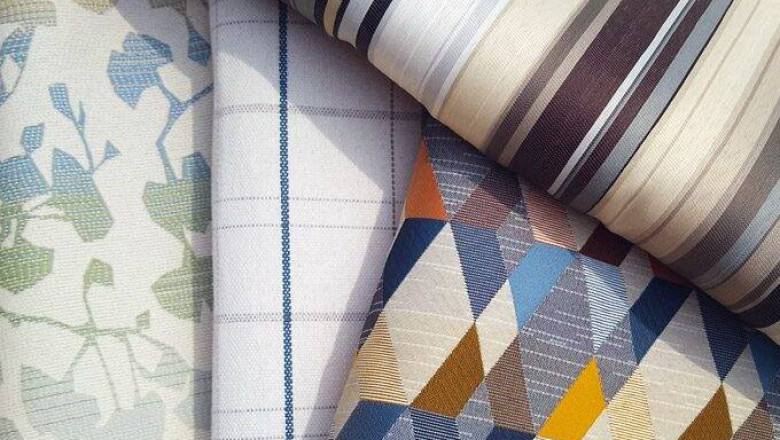views
The antimicrobial textiles market has experienced remarkable innovation in recent years, driven by growing awareness of hygiene, rising healthcare concerns, and the increasing demand for smart, functional fabrics. From everyday apparel to specialized medical gear, antimicrobial textiles are reshaping industries with their ability to inhibit the growth of microbes such as bacteria, fungi, and viruses. The surge in innovation is not only improving product performance but also paving the way for sustainable, long-lasting, and multi-functional textile solutions.
What Are Antimicrobial Textiles?
Antimicrobial textiles are fabrics that have been treated or infused with agents that destroy or inhibit the growth of microorganisms. Common agents include silver ions, copper, zinc, quaternary ammonium compounds, and natural bio-based substances like chitosan and bamboo extracts. These textiles are used in a wide range of applications, including medical textiles, sportswear, home furnishings, and military uniforms.
Key Drivers of Innovation
1. Post-Pandemic Hygiene Demands
The COVID-19 pandemic catalyzed a shift in consumer behavior, where hygiene and safety became top priorities. This shift significantly accelerated the development and adoption of antimicrobial fabrics, particularly in face masks, healthcare PPE, and public transport upholstery. Manufacturers responded by fast-tracking R&D efforts to develop more effective, safe, and long-lasting antimicrobial treatments.
2. Sustainability and Green Chemistry
As the industry grapples with environmental concerns, the focus has shifted to developing eco-friendly antimicrobial agents. Innovations in green chemistry are leading to biodegradable and plant-based antimicrobial treatments that avoid harmful chemicals. For instance, companies are exploring the use of essential oils, herbal extracts, and biopolymers that offer antimicrobial protection without environmental harm.
3. Smart and Functional Textiles
The rise of wearable technology has opened new frontiers for antimicrobial textiles. Smart fabrics that monitor body temperature, moisture, and even detect pathogens are being developed with integrated antimicrobial properties. These innovations are particularly relevant for healthcare and sportswear, offering dual benefits of hygiene and functionality.
Recent Breakthroughs and Innovations
1. Nano-Technology Integration
Nanotechnology is playing a transformative role in enhancing the efficacy of antimicrobial textiles. Silver and copper nanoparticles are widely used due to their potent and broad-spectrum antimicrobial properties. Nanostructures enable even distribution of agents across fibers, increasing durability and performance while using fewer raw materials.
2. Durable and Wash-Resistant Formulations
One of the historical limitations of antimicrobial textiles has been the loss of efficacy after repeated washes. Innovations in binding technologies now allow antimicrobial agents to adhere more strongly to textile fibers, making them more durable and suitable for long-term use. Some fabrics maintain their antimicrobial efficacy for up to 50–100 washes.
3. Regenerable and Responsive Textiles
Researchers are developing fabrics that can regenerate their antimicrobial properties after exposure to heat or light, significantly extending product lifespan. For example, fabrics embedded with photocatalytic materials can reactivate their antimicrobial effect when exposed to UV light, offering on-demand reusability.
4. Hybrid and Multi-Functional Fabrics
Combining antimicrobial properties with other functional features—such as UV protection, odor control, or moisture-wicking—has become a major trend. These hybrid textiles are especially popular in activewear and travel gear, where multiple performance features are essential.
Applications Across Industries
Healthcare
In hospitals, antimicrobial textiles are used in uniforms, bed linens, surgical gowns, and curtains to minimize infection risks. The rise of hospital-acquired infections (HAIs) has made these fabrics essential for infection control.
Apparel and Sportswear
Brands are increasingly integrating antimicrobial technology into casual and performance wear to combat odor and maintain freshness. This trend is particularly strong in athleisure and outdoor gear.
Hospitality and Transportation
Hotels, airlines, and public transport systems are adopting antimicrobial textiles for seats, carpets, and curtains to improve hygiene and reassure customers.
Military and Defense
For personnel operating in high-risk environments, antimicrobial uniforms and gear help reduce the risk of infections and improve overall field hygiene.
Future Outlook
The antimicrobial textiles market is expected to continue growing, fueled by technological advancements and increased cross-industry adoption. According to industry reports, the global market is projected to reach over USD 15 billion by 2030, with Asia-Pacific leading in production and North America driving innovation.
Continued investment in R&D, particularly around sustainable and smart textile solutions, will be crucial. Collaboration between textile manufacturers, biotech firms, and academic institutions is also anticipated to play a key role in shaping the next wave of innovation.
Conclusion
Antimicrobial textiles are no longer a niche innovation—they are becoming a fundamental component of modern textile design across numerous industries. With continued breakthroughs in materials science and sustainability, the future of antimicrobial textiles promises cleaner, safer, and more intelligent fabric solutions for a changing world.






















Comments
0 comment